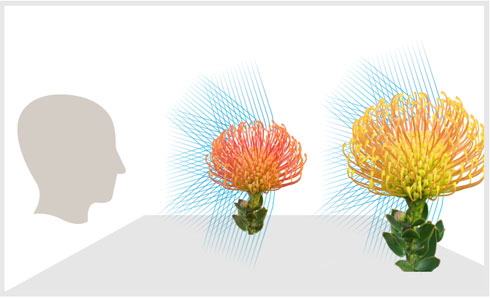Vincent Versace’s Five Tips for Great Black-and-White Photos
March 26, 2012
“Black and white is the best way to learn photography, and in my experience, it’s the photography we all go back to. If I had my druthers, I’d never shoot another color photograph as long as I live.” – Vincent Versace

The New York Times’ Gadgetwise column published this outstanding article on Black-and-White Photography. I would also highly recommend Mr. Versace’s books, including his latest From Oz to Kansas: Almost Every Black and White Technique Known to Man to be released in July, 2012:
Of course, I haven’t read it yet myself, I’m still working out the kinks in my Time Travel Machine. (If only Doc Technical could get that dab-blamed water-pump to turn over!). But I think you can trust this 4-time nominee to the Photoshop Hall of Fame. His previous best-seller, Welcome to Oz was Shutterbug magazine’s “Best How To of the Year.”

New York Times reviews the revolutionary new Lytro Camera
March 26, 2012

We’ve written about the amazing Lytro camera before – the first ever to capture multiple planes of depth in a single image and adjustable after the fact. Now the New York Times has a review and an inside look at the mechanics of this revolutionary device. I submit this as evidence that occasionally there is, in fact, something new under the sun.
Shorpy Historical Photo Archive
March 26, 2012
Coney Island, New York, circa 1905. “Whirl of the Whirl, Luna Park.” 8×10 inch dry plate glass negative, Detroit Publishing Company.
Atlantic City
Baltimore
Birmingham AL
Boston
Buffalo NY
Charleston SC
Chicago
Cincinnati
Cleveland
Coney Island
Detroit
Indianapolis
Los Angeles
Louisville
Memphis
Miami
Milwaukee
Minneapolis
New Orleans
New York City
Philadelphia
Pittsburgh
Richmond
San Francisco
Savannah
St. Louis
Syracuse
Toledo
Vicksburg
Washington, D.C.
This is leading
And photo galleries including
This is leading
4×5 Kodachromes
Animals
Aviation
Bathing Girls
Cars & Trucks
Civil War
Colorized Photos
Factories
Florida History
Kids
Kitchens
Mining
Pretty Girls
Railroads
Streetcars
Service Stations
Sports
WPA Posters
World War II
The History of Digital Photography – Extreme Tech
January 12, 2012
As the news that Kodak may disappear as an iconic American brand is in the financial headlines these days, I thought it was worth highlighting a history of digital photography put together by Sebastian Anthony of ExtremeTech.
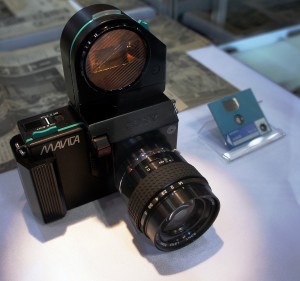
Since Kodak brought the first digital SLR to market in 1991 (at a retail price of $30,000) it’s hard for an outside observer, like me, to understand how they could have fallen so far behind the curve in a market that they could’ve owned.
Although some companies never do seem to get the memo that says, Adapt or Die.
In fact, a close friend of mine – a skilled amateur photographer who worked for a professional film processing lab – told me back in 2000 that film would never be replaced by digital, due to the relative poor resolution of the then-current crop of digital point and shoots. Today, he shoots digitally (of course) and the company he worked for no longer exists.
For me this is an example of how even knowledgable professionals are shockingly poor at making predictions in their own fields. The views of most pundits are not any more accurate than a coin flip. (Except, of course, for this guy I know who picks stocks. He knows how to beat the Street. See, he’s got this system. . .)
CameraSim: Free Web App Demystifys SLR Photography
September 10, 2011
Jonathan Arnold, founder of Tuitive, a user interface design company has created a free browser-based teaching tool called CameraSim that is both simple and brilliant. The goal is to “demystify SLR photography” by showing you what happens when you change various settings on your camera, specifically lighting, distance, focal length, ISO, aperture and shutter speed. A sample image of a young blonde child at a playground with a plastic spinning toy is your photographic target. You change the settings and click the Snap Photo! button to see the result of your modifications.
This is practical teaching enabled through the web that makes it simple and free to experiment to your heart’s content and learn what works best visually. This is, as I wrote earlier, simple and brilliant. It makes me wonder what other sort of educational experiences could be taught this way?
Thank you, Jonathan Arnold for creating this and making it available to everyone with a desire to better their photography.
Click on image for larger size.

There are No ‘Colors’ There is Only Light
August 24, 2011
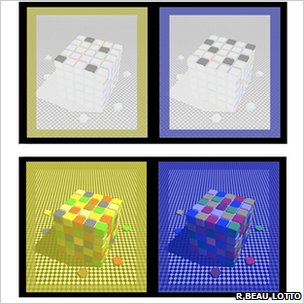
The grey tiles on the left look blue and the grey tiles on the right look yellow. But they are grey in each image.
Beau Lotto is appearing on the BBC’s Horizon show with a program called Do You See What I See? about color perception where he explains that color (or colour) is not in the objects we perceive, but rather manufactured in our brains. The conclusion he draws from this is, I think, wonderful.
So we all see the world differently. Indeed, we have no choice about this because our experiences of the world are necessarily different. None of us sees the world as it is. In this sense we are all delusional, what each of us sees is a meaning derived from our shared and individual histories. This awareness, possibly more than anything else, provides an irrefutable argument for celebrating diversity, rather than fear in conformity. Which is liberating, since knowing this gives you the freedom (and responsibility) to take ownership of your future perceptions of yourself and others.
“Touch of Evil” – Opening Crane Shot
July 21, 2011
If you’ve never seen this late noir classic directed by Orson Welles, you’ve got a real treat in store. This post was inspired by a site that recently claimed to compile the 100 best scenes in American cinema.
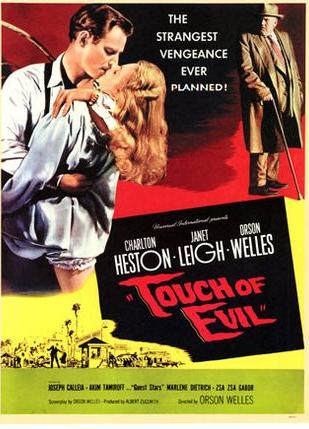
Of course, anything like that is wildly subjective and open to serious debate. Let’s just say that my own list does not include Tom Cruise shouting, “Show me the money” or Sharon Stone’s crotch shot from Basic Instinct.
But one sequence on this list that would be not only in my personal top 100, but my personal top 5, too, is the opening of Touch of Evil. It’s brilliant technique and great visual storytelling. It’s the kind of thing that can only be done in film. And it’s one of the reasons true film geeks will always revere Welles.
Touch of Evil was edited without Welles’ consent priot to it’s original 1958 theatrical release. He wrote Universal a 58 page memo to correct these unwanted changes. In 1998 a ‘restored’ version was released that attempted to follow Welles’ memo. The opening sequence (above) had the film’s title’s removed and the original soundtrack restored, integral to being able to follow the movement of the car with the bomb.
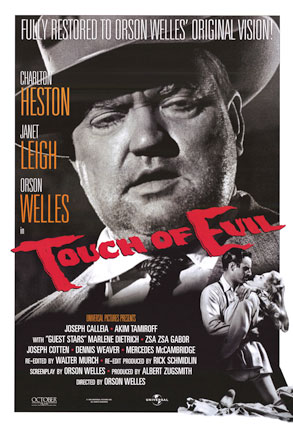
Wings & Wheel at Sikorsky Airport 2011 3D Photos
July 20, 2011

On May 22 I attended the 2011 Wings & Wheels at Sikorsky Airport in Stratford, CT. The weather was not nearly as cooperative in years past and so I got fewer shots this time around. Here’s the best of it in anaglyph 3D. . .
Click on any image for large size light box style slideshow
Lytro – Light Field Capture Camera: Adjustable Focus, After the Fact
June 23, 2011
Now here’s something that certainly sounds too good to be true: imagine a camera where you don’t ever have to worry about focusing.
Snap your picture and, after being digitally processed with some astonishing new software, have an image that you can click on to change the focus! That’s the promise of the new Lytro Light Field Capture Camera. Seriously, you’ve got to play with some of these pictures in their image gallery.
If I understand it and I’m not sure I do, the concept is that light is traveling from the scene you want to capture in all directions. In a normal photograph all this light is collapsed (or focused) on one plane and exposure and focus are set – unchangeable, irrevocably – at that instant.
Somehow – and here comes the tricky, proprietary, secret formula for Coca-Cola part – the folks at Lytro are able to capture all the wavelengths of light in one file. They do this by substituting software for many of the components of a traditional digital or film camera and in combination with a new type of light field sensor. This sensor is capable of recording the vector direction of all the rays of light in a given scene simultaneously. If that doesn’t clear it up, I’m sure the following illustrations will answer none of the questions you may have.
There’s an awful lot of information that isn’t on the Lytro site right now, like pricing, availability and specs (such as image resolution) on the new cameras. Also, whether or not these new picture files can be viewed on any digital device across all platforms. Still, this does sound interesting.
Will it be a short-lived gimmick or a new era in photography? A toy or a tool? Threat or Menace? Who can say. Me, I thought the development of the Foveon sensor was going to change digital photography forever. But we’ll be watching this one. . .
Tilt-Shift Video – “The Sandpit” by Sam O’Hare
June 23, 2011
Photography fads – driven by technology – come at us with bewildering speed, have their moment in the sun, then quickly become passé. Remember when High Dynamic Range photography was all the rage? It’s similar to trends in advertising and user interface design, I think. They all have a very high churn rate. Still, let’s enjoy them while we can.
Tilt-shift photography has now moved into the video space, as the following link at Asylum.co.uk attests. My favorite of these is embedded below, The Sandpit by Sam O’Hare, a five and a half minute survey of a day in the life of New York City, in miniature. It consists of over 35,000 still images! O’Hare explains the process here.
Tilt-shift video made its mainstream debut in David Fincher’s The Social Network in the Henley Royal Regatta sequence. Fincher explains what he was after here.











